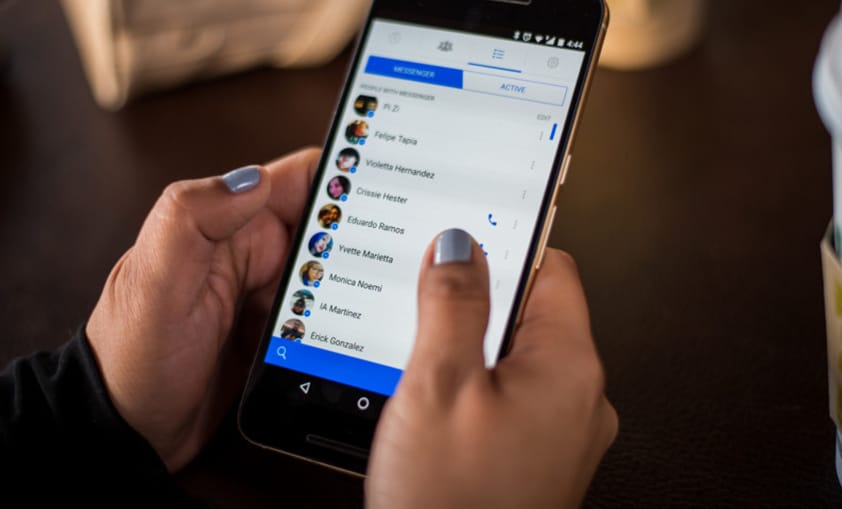My husband and I dated long-distance for over three years while I was away at school out of state. And even after having established the groundwork of our relationship while we were in the same physical area, it was still a challenge for us to have good communication at times when we had to rely on things like text messages and emails.
But when you don’t actually even know the person you’re messaging, another layer of confusion can get added to the picture. And suddenly, you might find yourself at a loss for what the other person is actually trying to get across to you.
So here are some tips to help both you and your conversation partner get to a place where you can make a real connection.
A Good Starting Point

Though they can be frustrating at times, things like messaging, email, or texting can be great ways to get to know someone initially —emphasis on the initially. Problems can start to arise if one or both parties try to treat it as a way to dive deeper in getting to know someone, rather than realizing that messaging like this has some pretty big limitations.
The main things messaging can be useful for are initiating contact, expressing interest, and asking some initial questions about the other person. Once it’s clear that there is a lot in common, move on to more personal means of communication, like a phone call or possibly a meeting.
The problem with trying to get to know someone deeply while using only text becomes pretty obvious to anyone who has tried it. It’s very difficult to express deep emotion, convey the kind of humor that works in speech, and make sure the other person understands what you’re saying. There’s really no good reason to stay in the text zone any longer than you have to.
Reading Isn’t Always Easy

The reality is, though, that in our modern world, communicating through things like messaging is convenient and sometimes necessary. So when you do use it, watch for clues to gather subtext and meaning from your conversation partner.
Between the two of you, does one party always or almost always initiate the conversation? If you’re enjoying chatting with someone but realize that you are the one who always starts the chat, it might be a hint that the other person is less interested than you are.
Are the other person’s replies short or lengthy? Any pattern of monosyllabic replies might be a hint that they’d rather end the conversation than dive deeper in getting to know you.
But on the other hand, if the other person replies with a lot of information or, even more so, with some questions to further the conversation, that’s a good sign that they’re interested and would love to keep talking.
Let’s Talk 🙂 About Emojis

In a certain sense, I often feel that emojis are the lowest common denominator of communication (good thing they made a whole movie about them, right?). And I admit I feel a bit like a middle schooler if I try to use them in everyday life.
But I have to think that there is a bit of a place for them in messaging conversations.
I have found that, even in a semi-professional setting, people might put a smiley face – you know, the ones like so, “:)” – to convey a light, no-worries type tone. In a casual, get-to-know-you message, there’s nothing wrong with an occasional smiley face, or maybe its sad twin, the frownie-face, to try to get across what your tone would be in person.
But should you use them all over the place, and risk the other person wondering if some thirteen-year-old relative has hacked your account? No. Probably best to save attempts to get across any more intricate emotions for your future time in person together.
Texting Your Way Forward

Even after you’ve already met the person, and perhaps going forward into a relationship, it’s good to be conscious of how much of your communication continues to be through means like messages and texts.
The perfect balance won’t be the same for every person or couple, but there are definitely some instances where it can be helpful, and times when it can be a problem.
Texting by phone can be useful for things like a quick detail-coordinating question, or as a way to drop a brief “thinking of you,” sentiment to them.
When my husband and I were dating long-distance, there were times when our schedules just didn’t match up for a phone or Skype call but we still had things we wanted to share with one another, so emails did occasionally come in handy.
But there are some things that should be saved for a phone call or an in-person chat. Just to name a few, things like a discussion about serious life changes, painful topics, and definitely breakups should be handled in person whenever possible. Anything that involves negative emotion is probably not something that should be dealt with over messages or texts.
Clarity in a Message-ing World
Above all else, when things get confusing in the world of messaging, try to take a step back. Consider how you would read and interpret things if you didn’t feel you had so much at stake emotionally. Get input from a less-invested friend if you need to.
Just remember that messaging is only a flawed means of communication and that if you can make it through a tricky text zone, it should get easier from there.



